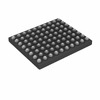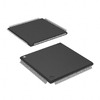Manufacturer Part Number
MK22FN256CAP12R
Manufacturer
NXP Semiconductors
Introduction
The MK22FN256CAP12R is part of the Kinetis K20 microcontroller series designed for low power, precision applications, leveraging ARM Cortex-M4 core technology with high performance and energy efficiency.
Product Features and Performance
Core Processor: ARM Cortex-M4
Core Size: 32-Bit Single-Core
Speed: 120 MHz
Connectivity Options: I2C, IrDA, SPI, UART/USART, USB, USB OTG
Enhanced Peripherals: DMA, I2S, LVD, POR, PWM, WDT
Program Memory Size: 256KB Flash
RAM Size: 128KB
Internal Oscillator
Dual Role USB Interface facilitating host or device functionality.
Product Advantages
High computation power with low power consumption.
Extensive I/O capabilities facilitating versatile design applications.
Wide operating voltage range suitable for battery-powered applications.
Compact 80-WLCSP package suitable for space-constrained applications.
Key Technical Parameters
Number of I/O pins: 52
Voltage Supply (Vcc/Vdd): 1.71V ~ 3.6V
Data Converters: A/D 2x16 bits, D/A 2x12 bits
Operating Temperature: -40°C ~ 85°C
Mounting Type: Surface Mount
Package: 80-WLCSP (4.13x3.56)
Quality and Safety Features
Low Voltage Detection (LVD) for safe operation
Power-On Reset (POR) ensures reliable start-up
Watchdog Timer (WDT) to prevent system malfunction
Compatibility
USB OTG functionality for interoperability with other USB devices
Compatible with various ARM development tools and software
Application Areas
Industrial Control
Consumer Electronics
Internet of Things (IoT)
Medical and healthcare systems
Product Lifecycle
Current Product Status: Active
No announced discontinuation, ensuring long term availability and support
Several Key Reasons to Choose This Product
Highly integrated with multiple communication interfaces allows reduced system component count.
Robust operation under extreme temperature conditions.
Ready for future upgrades with active product status and ongoing manufacturer support.
Superior analog capabilities with multi-channel high-resolution ADCs and DACs.




 MK22FN1M0VLQ12NXP USA Inc.IC MCU 32BIT 1MB FLASH 144LQFP
MK22FN1M0VLQ12NXP USA Inc.IC MCU 32BIT 1MB FLASH 144LQFP MK22FN256VLH12NXP USA Inc.IC MCU 32BIT 256KB FLASH 64LQFP
MK22FN256VLH12NXP USA Inc.IC MCU 32BIT 256KB FLASH 64LQFP MK22FN512VFX12NXP USA Inc.IC MCU 32BIT 512KB FLASH 88QFN
MK22FN512VFX12NXP USA Inc.IC MCU 32BIT 512KB FLASH 88QFN